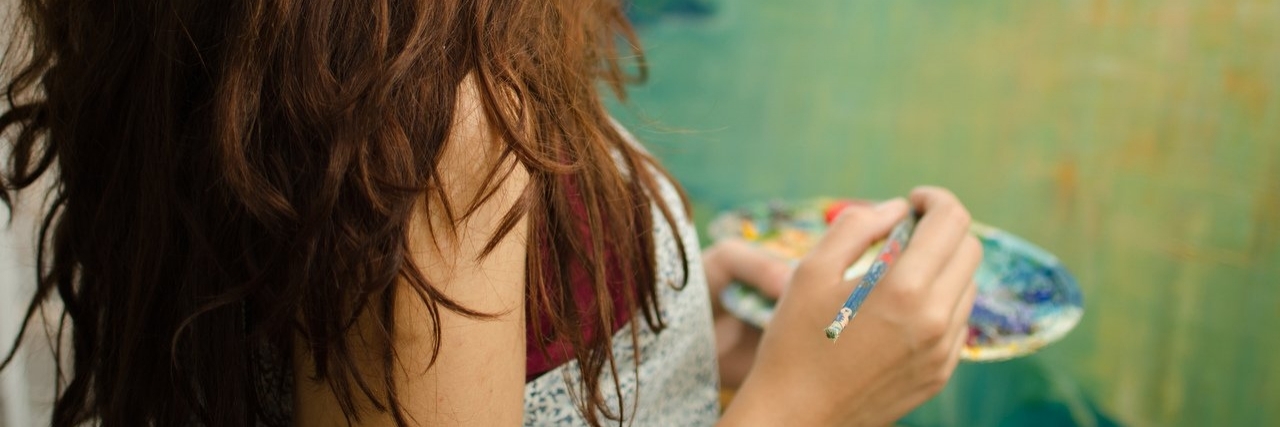It can be easy to lose interest in life when you’re consumed with pain, depression and other awful symptoms. But I’ve found that engaging with my illnesses in creative ways is empowering.
You don’t have to be the next Van Gough, Ansel Adams, Sylvia Plath, PewDiePie or Alicia Keys to be creative. I have compiled a list of “creative” things you can have a go at, even if you think you suck.
By creative, I mean expressing yourself in an imaginative, artistic, innovative, inspirational, personal or unique way. You can “creatively engage” with your illness by using any creative medium to:
• Process the pain and grief your illness has caused.
• Externalize overwhelming feelings.
• Articulate acceptance.
• Rest and relax.
• Create awareness about your illness.
• Reach out for support.
• Distract yourself for a while.
• Innovate a way to re-engage with an activity your illness has prevented you from doing.
• Encourage others to persevere.
• Show others they’re not alone in their illness.
• Remind yourself that you have hope.
• Share your story and experience.
• Reveal your resilience and strength.
• Ask for support.
• Project positivity.
• Express gratitude.
• Break stigma.
Here’s a list of 30 ways you can engage creatively with your illness.
1. Go for a stroll in the park, a walk on the beach or simply sit in your sunny backyard and take a few pictures.
2. Pick a photo you’ve taken or download a free stock image and add the cheesiest quote you can find (or your favorite quote or verse from Scripture).
3. Type and print encouraging statements with fun fonts to put on your wall.
4. Print your favorite family or holiday photos and make a collage, or make a scrapbook with those holiday and baby photos.
5. Give coloring books a try. The adult coloring book fad has taken the world by storm. Have you tried it yet?
6. Communicate with pictures. Visualize how you feel and what it’s like to live with your illness and paint or draw it.
7. Experiment! Paint, sketch and blend with different mediums. Most variety shops sell pastels (oil, soft and hard), charcoal, paint (acrylic, watercolor and oil) and canvas pads. Experimenting is fun and can be a great distraction.
8. I’m an awful drawer, but it’s fun to sketch or create stick-figure comics.
9. Sing! Too scared to try karaoke? You can now download karaoke apps onto your phone or tablet to take “singing in the shower” to the next level.
10. Pick up the musical instrument you haven’t played in years. Most of us have a recorder hidden at the back of our wardrobe.
11. Write a song.
12. Don’t have a musical bone in your body? Try changing the lyrics to a song or nursery rhyme.
13. Create music playlists for every occasion.
14. Make up an interpretive dance — I can never go past Vanessa Carlton’s “A Thousand Miles.”
15. Write a short story.
16. Create a character you can relate to and write a monologue, one-act play, radio script or a short film to explore and communicate the character’s journey.
17. Start a journal/diary, blog or a video journal. And you don’t have to publish it for the world to see.
18. Write a poem. If you don’t “do poetry,” you could always start with a simple haiku or limerick.
19. Write a letter to yourself.
20. Turn statistics, research and (accurate) medical information into an infographic.
21. Put on a cute apron and be a master chef by cooking your favorite cuisine or experimenting with a classic dish.
22. Create the next paralympic sport. If there is a physical activity/sport you love, but can no longer play it due to your illness, come up with an adaptation that fits your physical limitations.
23. Knit! You can never have too many scarves, beanies or comfort blankets.
24. Give yourself alter ego life and make a sock puppet.
25. If you’re a gamer and can code, create a game related to your illness. I dream of playing an arcade game called “The Angry Uterus.”
26. Design a personal tattoo (which is in no way a commitment to get a tattoo).
27. Make some awareness jewelry.
28. Design a t-shirt with an awareness message. You can never have too many awareness t-shirts! (Although my mother would disagree.)
29. Be pretty and expressive by experimenting with makeup and nail art.
30. Download a meme generator and amuse yourself.
The most important thing to remember is not to be a perfectionist. It’s not about the finished product; it’s about engaging with your illness, disease or disability in a creative way.
In the short term, being creative will help you relax, decrease tension and give you another way to communicate. The long-term benefits of developing this habit is often insight, acceptance and healing.
Follow this journey on Breaking Stigma.
What’s a part of your condition you live with every day that others might not see? Explain what that experience feels like. Check out our Submit a Story page for more about our submission guidelines.
Lead photo source: Thinkstock Images

